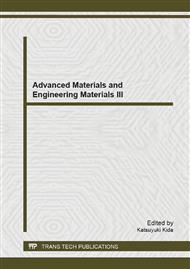p.472
p.478
p.482
p.488
p.492
p.496
p.500
p.504
p.508
Low Temperature and Copper Induce Viable but Nonculturable State of Salmonella typhi in the Bottled Drinking Water
Abstract:
Salmonella in the normal state were injected into the sterile bottled drinking water with the concentration of 107CFU/ml finally. Then these samples were respectively treated by 4°C, -20°C, copper, the two latter samples were found that their numbers of bacteria colonies reduced to zero on the solid culture medium and the absorbance had no change in the liquid culture medium, they had no reproduction and can not be cultured, which had been thought that the cells were all dead. The ways of alteration in temperature, adding of tween20 and catalase may help awake up their culturability in the experiment. The samples had entered the so-called viable but nonculturable state (VBNC).
Info:
Periodical:
Pages:
492-495
Citation:
Online since:
February 2014
Authors:
Keywords:
Price:
Сopyright:
© 2014 Trans Tech Publications Ltd. All Rights Reserved
Share:
Citation:


